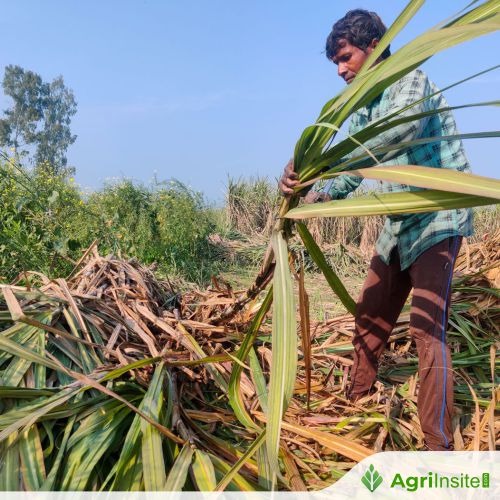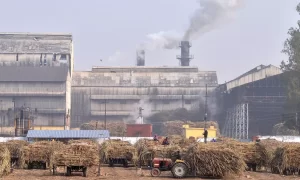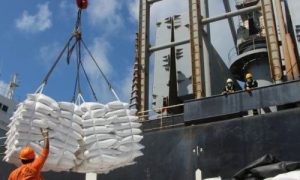AI Technology Turns A Boon For Sangli’s Farmer As He Eyes Significant Sugarcane Production

Maharashtra’s sugarcane farmers are embracing AI to boost yields and cut costs. Expert Sanjeev Mane, who achieved a record 168 tons per acre, highlights AI’s role in fertiliser planning, water management, and disease prediction. With tools like satellite mapping and sensors, farmers now receive daily insights via mobile, making AI farming a game-changer for sugarcane cultivation.
Sangli: Sugarcane farmers in Maharashtra are now using Artificial Intelligence (AI) to cultivate sugarcane, a cash crop. The farmers are slightly moving away from traditional farming and using AI for sugarcane cultivation. It is giving them huge rewards. For farmers, it is like a marriage of traditional farming with AI and they are the ones, who are being benefitted by it. It is already proven that AI technology is helping sugarcane farmers. Agricultural experts believe that AI technology will be a boon for farmers and India in the future.
Sanjeev Mane is known as a sugarcane expert in Maharashtra. Mane, who lives in Ashta in Sangli district in western Maharashtra, has conducted various experiments in the sugarcane sector in the last 15 years. Due to this, he received the ‘Krishi Ratna Samman’ from the Maharashtra government. Apart from this, he has also been honored with several awards. He also guides farmers in Maharashtra, Karnataka and Gujarat.
Mane claimed that he has so far produced 168 tons per acre of sugarcane in his own field, which is a “world record”. According to Mane, AI sugarcane farming is the need of the hour. “It is necessary to know about traditional sugarcane farming before talking about this type of sugarcane farming. There are five main factors with regard to sugarcane farming. These factors are very important to increase the production of sugarcane per acre,” Mane said.
Mane said the key five things to increase sugarcane production are that the land must be fertile, plantation management is necessary, the amount of chemical fertilizers must be in the right amount, water management and crop protection.
He elaborated that crop protection means how to protect it in case of changes in the environment or the outbreak of diseases and pests. “By planning on these things, in 1997, I successfully achieved a production of 100 tons of sugarcane per acre in my field for the first time. Then in 2007, the production increased to 125 tons per acre. In 2010, the production rose to 150 tons,” he said.
In 2017, Mane took guidance from several scientists and tried to produce 200 tons of sugarcane per acre, but he failed.
Later, in 2017, he took the guidance of various scientists to produce even more sugarcane in that acre and tried to produce 200 tons of sugarcane per acre. However, he failed, but the production of 168 tons of sugarcane per acre was achieved at that time.
In India and especially in Maharashtra, sugar manufacturing has increased in the last few years, and sugarcane production has also increased. However, due to factors like changing weather, outbreak of diseases, increased production costs, sugarcane production deceased in the last two years and so the farmers and sugarcane mill owners were worried.
Meanwhile, the Centre recently increased the ‘FRP’ of sugarcane. The ‘FRP’ of Rs 3,550 per tonne has been announced. Even though the FRP has increased, the per-acre production of farmers has not increased much. If we consider the country, the average sugarcane productivity is 27 tonnes per acre.
In Maharashtra, an average of 32 tonnes per acre is produced by farmers. However, the production of progressive farmers is higher, especially in western Maharashtra, where production ranges from 50 tonnes to 70, 80 and 100 tonnes. However, the number of such farmers is very less.
Sugarcane is also seen as a crop that can be grown with less water. However, farmers believe that giving more water increases sugarcane production. However, now technology like AI has been introduced in sugarcane farming. With the help of this technology, it is now becoming clear that farmers can save money and time by increasing sugarcane production. Sugarcane experts and scientists are also giving preference to AI sugarcane farming.
“Now ‘AI’ technology has been developed. With the help of AI, it is possible to make progress in sugarcane farming. Under the guidance of former Agriculture Minister Sharad Pawar, work has started in Maharashtra to make AI technology available to sugarcane farmers. Sugarcane farming based on AI technology is being experimented in 260 places in different parts of Maharashtra. Microsoft is working to collect its data. A war room has been started at the Krishi Vigyan Kendra in Baramati to monitor all these things. We are also one of the 260 places where AI sugarcane farming is being experimented,” added Mane.
“AI technology is currently working in our sugarcane fields. We have already developed some of these modern technologies in our fields. AI technology increases sugarcane production, but the most important thing to use this technology is that there is drip irrigation in the field. If there is no drip irrigation, it is impossible for the farmer to do AI sugarcane farming,” Mane added.
There are some important things in ‘AI technology’. This includes satellite mapping, weather stations in the field and also sensors, there are ten types of sensors in this, which are planted in the ground. Most importantly, a photo of the land in the sugarcane field is scanned and sent daily through satellite.
“We get its image on our mobile. In it, we start getting information every day from the first day of sugarcane cultivation. We understand things like how much sugarcane has grown in which part of the land, and in which part the growth has slowed down. Due to which we can improve those things. While cultivating sugarcane, we get accurate information about how much fertiliser should be used to bring fertility to the land, and how much organic and chemical fertilisers the land needs. Daily information about the evaporation of sugarcane leaves, soil moisture, atmospheric humidity, wind speed, sunlight, and how much water is needed? We get daily information on our mobile phones,” elaborated Mane.
“Apart from this, from the point of view of crop protection, we get information about when and how much rain will fall, the incidence of diseases and the incidence of pests four to five days in advance. Along with this, we also get information about what measures to take,” he said.
According to Mane, another important aspect of AI technology is that a farmer can determine how many tons of sugarcane he or she wants to take per acre. “Accordingly, accurate information about fertiliser and water is given by ‘AI’. If the farmer follows all the instructions of AI and does things accordingly, the expected sugarcane production per acre can be obtained. If a farmer is producing 30 tonnes per acre, then AI can definitely increase the production to 40 to 45 tonnes. Those who have 80-85 can reach the 100 mark. It is now possible to get 10 to 15 tonnes more per acre due to AI technology,” said Mane.
Mane said that using this technology can bring economic prosperity to farmers’ lives. “Farmers have to spend more on fertiliser, water, and time for the sugarcane crop they are growing. But if sugarcane is cultivated based on AI technology, it will benefit agrarians. AI is a technique to get more production with less cost, less water, and less labour,” he said.
“Due to this, the fertility of the land will remain good. Apart from this, proper planning of the amount of fertiliser for production, proper planning of water,r will save money and the production per acre will substantially increase. The cost will be reduced and the farmer will get more profit,” he said.
To Read more about Sugar Industry continue reading Agriinsite.com
Source : ETV Bharat
















